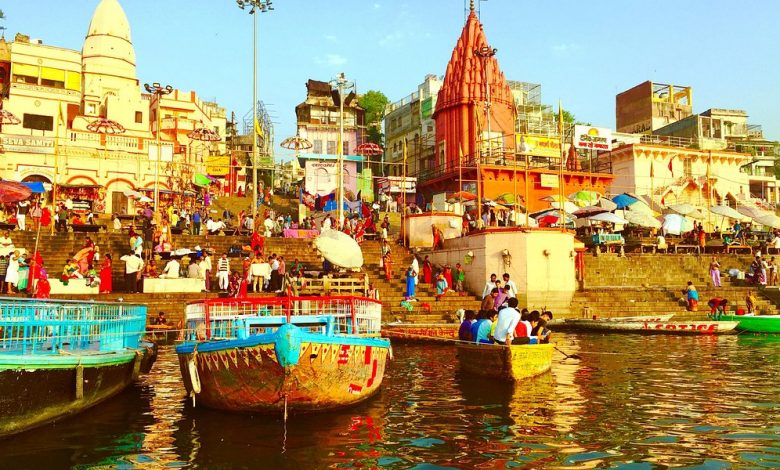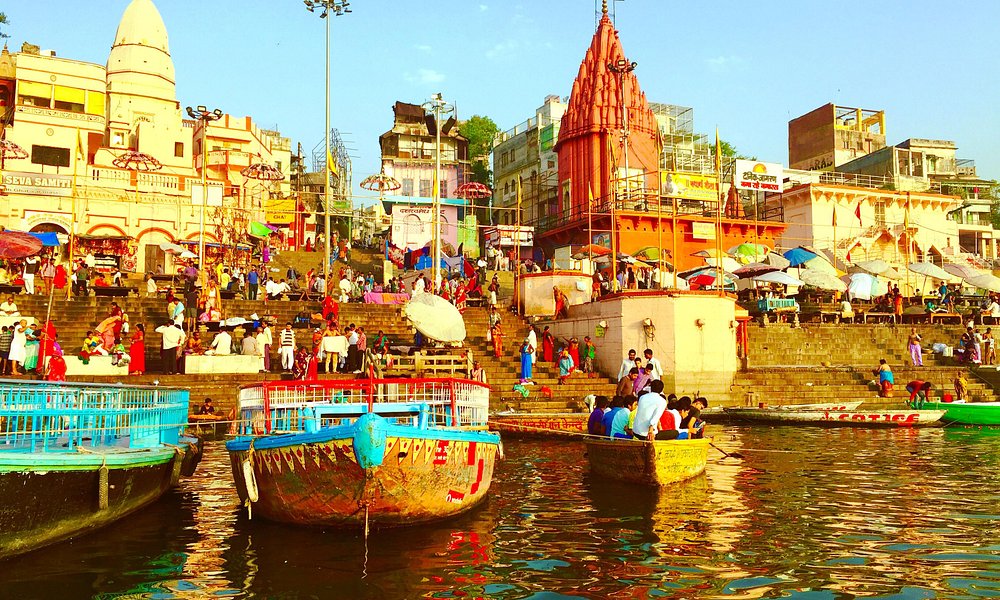Top 10 Facts about Kashi Vishwanath Temple in Varanasi

Kashi Vishwanath Temple is the famous temple in Varanasi dedicated to Lord Shiva. The temple is located on the bank of River Gange near Dashashwamedh Ghat. Varanasi is also known as Banaras or Kashi or Nagri of Bholenath or City of Lights, it is one of the major cities of North India.

It is said that there is Vishwanath in every particle of Kashi, where did this idiom originate from, and whether the existing Kashi Vishwanath temple is the same where according to legends Bholenath appeared.
Here are the list of some of the interesting and historical facts about Kashi Vishwanath Temple:-
Top 10 Interesting Facts about Kashi Vishwanath Temple in Varanasi
- In the 12th century, during the times of the Gahadwal kings, ‘Nana Tirtha Mahatmya’ written by Pandit Lakshmidhar states that initially Kashi was called the unseen region and Shiva as Avimukteshwar.
2. Kashi Vishwanath Temple is also famous as Golden Temple. Also famous as one of the twelve Jyotirlingas, in India. From October to March is considered as the best time to visit the temple.
3. By the 16th century, pandas and priests changed this name of Shiva to Vishwanath. Earlier, Kashi used to worship the Swayambhu (self-manifested) Linga of Avimukteshwar, which is called Adiling. The temple was located to the north of Gyanvapi, while the Vishwanath temple used to be at the site of Gyanvapi. The Padmapurana, written around the 16th century, also suggests the self-styled Shivalinga of Avimukteshwar to be in temples separate from the lingam of Visvesvara, built and established by the Shiva worshipers. Gyanvapi was to the south of Avimukteshwar. Now-a-days, two Shivalingas of Avimukteshwar are described by the pandas, one in the small temple of the fiery angle of the Vishwanath temple, the other in the Dharamshala in front of the mosque.
4. In the 14th century, the army of the Sharqi sultans first broke the Vishwanath temple. Vishwanath Temple At the time of Akbar, in the 16th century, Narayan Bhatt, a scholar of the South, and Todarmal, Akbar’s Finance Minister, again methodically established the Vishwanath Temple in the Gyanvapi area.
5. By the time of Mughal period, Kashi had become a big religious shrine and in addition to the renovation done by Todarmal at the time of Akbar, Raja Mansingh of Jaipur also vowed to build one lakh Shiva temples here. Where so many temples were built, so the number was completed by digging the picture of the temple on many stones. Since then, the idiom of Shankar seated in the pebble (or particle) of Kashi.
6. During the British rule, the influential people of Kashi gave Warren Hastings a ne cessary certificate for courtesy and clean governance to maintain the rulership of the rulers over the city, while the accused was being sued for bribing in the Wilayat. In this, the Naubatkhana was also built in the Vishwanath Temple in Kashi for his hospitality.
7. During the 18th century, Marathas like Mahadaji Scindia, who wanted to take Kashi under their control, tried hard to get the Vishwanath temple rebuilt there by giving compensation to the Muslims in place of Gyanvapi Mosque. But the British did not want to get angry with the Muslim public by breaking the mosque and the Panchdravid Brahmin of Kashi himself did not stand in favor of the proposal to build the Vishwanath temple in 1742 by breaking the Gyanvapi mosque of the Maratha Sardar Malharrao.
8. Finally, in 1775, 125 years after Aurangzeb’s temple was broken, Queen Ahilyabai of Indore rebuilt the Vishwanath Temple next to Gyanvapi. In 1828, Chimanaji Appa established the Gyanvapi mandapa and around the same time the king of Nepal established Nandi in the complex. Maharaja Ranjit Singh had gold plated the pinnacle of the temple.
9. In the Ghadar of 1857, Nana Phadnavis was sent to Bithoor instead of Banaras, fearing that he would not regain the help of the Marathas of Benares. Due to this, the public anger against the British was deepened again. In 1857, when the British gathered in the Mint House, seeing the disturbances in the firing from the Banaras cantonment, they felt widespread anger of the public. Consequently, local help was sought in the protection of Vishwanath temple overnight and no communal riots in Kashi, prone to riots.
10. According to scholar Dr. Motichandra, the Vishwanath temple near Gyanvapi was not at the place where the temple of Swayambhu Lingwala Avimukteshwar used to be. The ancient temple was in the Dev Varanasi region north of Gyanvapi. In the 1830s, the government mint’s chief engineer, James Prinsep, conducted a census, according to which Varanasi city then had 1454 temples and 272 mosques. Kashi Vishwanath Temple is the temple which most visited temple during Varanasi tours.
There are so many nearby attractions such as Durga Temple, Ghats of Varanasi, Bharat Mata Temple, and few more. It is very essential to explore all the nearby attractions of Kashi Vishwanath Temple during visit of Temple.
Read more – 8 Places To Visit In Kasol And Around It




